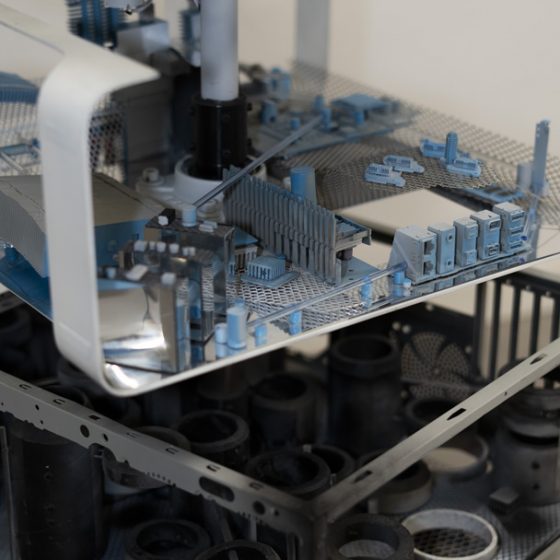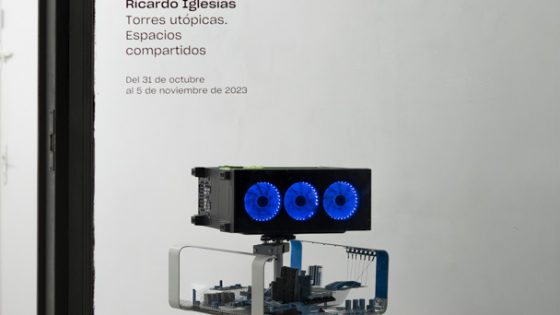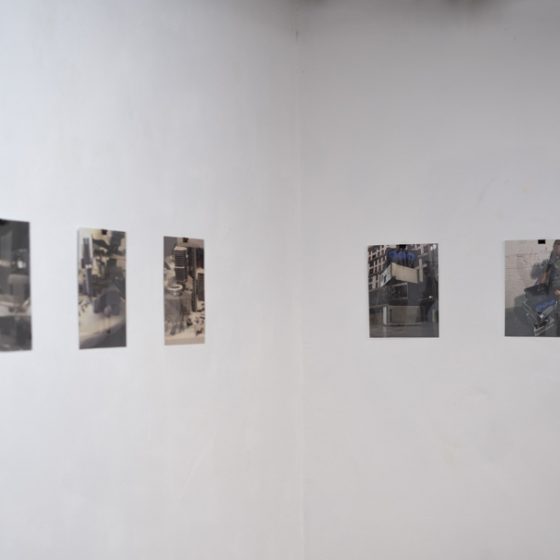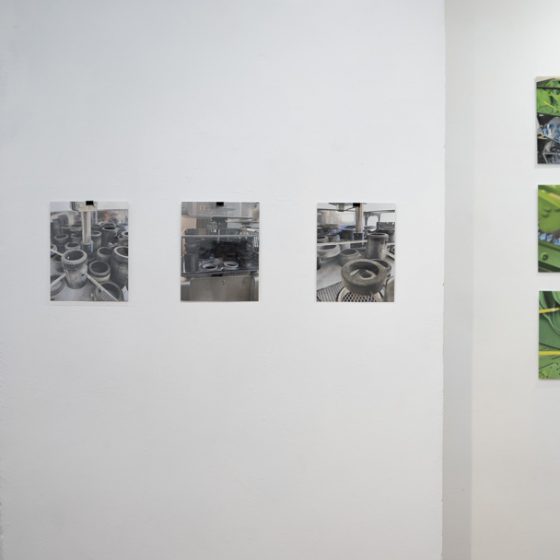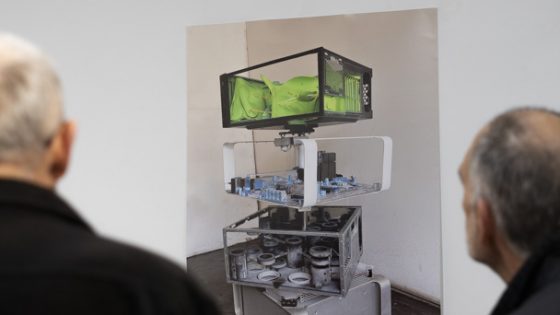Utopian towers. Shared spaces. Ricardo Iglesias
Utopian towers. Shared Spaces.
Tecnópolis is a technoutopia that promises growth, scientific progress, but hides other realities, those of imbalance and growing inequality (Gaja i Díaz, 2016, 75)
Currently, we continually witness new proposals for urban development and alternative cities, architectural spaces that propose different forms of habitability and mobility in contemporary global societies as a whole, and even in projects for future cities on other planets such as Mars. Many of these projects are born inspired by previous social, anthropological, architectural, philosophical, utopian imaginaries…
Historically we find conceptual contributions of utopian systems in the construction of structures of egalitarian coexistence such as Utopia itself (1516) by Tomas Moro, Christianópolis (1619) by Johann Valentin Andreae, La Città del Sole (1623) by Tomaso Campanella or The New Atlantis ( 1627) by Francis Bacon. After the Industrial Revolution, faced with the inequalities that new economic structures introduce into society (unhealthy cities, intensive work, labor exploitation…), utopian socialism defends the creation of more humane, fair and balanced communities.
At the same time, as the philosopher Ernst Bloch indicates, in the field of aesthetics we have witnessed the construction of images and artistic formats that have deepened the realization of possible spaces and utopias as visible referential frameworks for the whole of society: Constant, Nicolas Schöffer, Kosice, Xul for the City of the Present-Future: Tecnópolis (Postman, 2018), informational city (Castells, 1995), postmetropolis (Soja, 2009), futurópolis (Gaja i Díaz, 2016).
The project has a marked experimental character, with the application of new robotic technologies and with critical aspects of citizen coexistence. The main objective is to propose alternative imaginaries and proposals for the construction of shared spaces for social coexistence. In the same way that architects present and defend their ‘urban planning’ on paper, it is necessary to provide other visions of possibilities, in search of building transversal encounters between different groups and sensibilities. Without a doubt, the artist Constant and his New Babylon is one of the most significant references for this project.
To this end, the construction of a vertical ‘utopian’ robotic structure is presented, formed by several empty and recycled computer towers, stacked on top of each other, executed as small interconnected spaces that are part of a large megalopolis. Each tower represents a specific aspect of the Megalopolis: living space, nature reserve with vertical forests, open and hierarchical citizen space with different sets of common and individual buildings, robotic industry space with enormous factory masses and the energy space hidden at the base of the structure. In each space there are a series of channels for local movement and between areas.
The entire tower system sits as a structural column on a mechanized base with wheels that allows its autonomous and independent spatial movement. The base also has different presence sensors that prevent collisions with other objects/people. At the same time, each space can rotate 360o, showing all the visual information it contains. The exhibition is accompanied by cards of different sizes that show the evolution of the work process and specific details of each of the spaces.
Ricardo Iglesias García has a degree in Philosophy and Letters from the Autonomous University of Madrid and a Cum Laude doctor with European rank in Fine Arts from the University of Barcelona. In 2011-2012 he received the Extraordinary Doctorate Award. He is currently a professor at the Faculty of Fine Arts. U.C.M. In 2015 he received the III MADATAC New Media Art Essay Award and the publication of the book: Art and robotics: technology as aesthetic experimentation (ISBN: 9788415715740).
The development of parts is mainly based on three concepts: interaction, communication and control. Interaction understood as open systems of action in public spaces, as the development of reactive pieces in the face of the dynamic presence of the subject; communication as experimentation of new forms of aesthetic language that serve to expand the concept of art and enable critical exchanges between artists and spectators, and control as a unifying concept of the behaviors of current societies, where the use of automatic means in registration processes and information does not mean the absence of a subjective intention on the part of the system and, consequently, its manipulation.
Although he has held exhibitions in various parts of the world, he maintains a special bond with his city of birth, where he has held, among other exhibitions, an individual retrospective: Net.Art y Control at the Museo Centro de Artes de Vanguardia La Neomudéjar (2017). Pieces presented: Eden, ArtPlay, Surveilled Kronshtadt, Spam Tower, Caution, you are under surveillance, No more violence against women, Koinonía: word machine, Surveillance Cameras: they are alive!!, In the Dark, I photograph people who photograph art, Nosotras las putas, Ciber00, References and participation in the collective The Origin of Magic (2019) in the CentroCentro space.
National and international exhibitions (selection): Glitches and modifications of reality (Madrid 2021) (Al)most life, after all (Barcelona 2019) KronosArt (Barcelona 2019) Estéticas Expandidas (Pasto/Colombia, 2019), Wunderkammer (Madrid 2019) , Electronic November (Buenos Aires 2017) FASE Meetings (Buenos Aires 2017/2013) HarddiskMuseum (Barcelona 2017) Electronic Timing. BEEP Collection of Electronic Art (Valencia 2017) ArtPlay 1840s (TATE, United Kingdom 2014) Metaphors of survival (Buenos Aires 2013) Guerrilla Video Festival (Sao Paulo 2012) International Video Art. MECA (Tessy-sur-Vire 2012) Video art in movement (Lima 2012) A&D Gallery (BCN 2011) FILE | Electronic International Festival (S. Paulo 2011 / Rio de Janeiro 2006) Les Rencontres Internationales (Paris 2008 / MAD 2008) Banquet. Nodes and networks (ZKM – Karlsruhe 2009 / LaBoral – Gijón 2008), Sintopía(s). About the relationships between art, science and technology (Instituto Cervantes, N.Y. 2008 / Pekín 2007) Resplandores (Buenos Aires 2007) Double Game (Mexico 2006) Metrònom (BCN 2005) Conde Duque (MAD 2003).
Awards and scholarships: Grants for contemporary creation and national and international mobility (2022), International mobility for UB-Univ researcher. Maimonides-UNTREF. Buenos Aires (2017) Artistes residents. Hangar. Barcelona (2014) LICAP. Buenos Aires Residence (2013) NCCA. San Petersburgo Residency (2013) VEGAP Proposals (2012) OSIC Grants (2018, 2012), Subvenciò Institut Ramon Llull (2011, 2006) CONCA. Arts Visuals (2011) FONS09 (2009) KREA Contemporary Expression (2009) Centro Matadero Grants (2008) AVAM Processes (2007) Off ARCO-BEEP Award (2006) IX Fundación Arte y Derecho (2005) Award for best CD-ROM/piece by Net.Art. Navarra Creation Festival (2001) Special mention to the Net.Art proposal. I International Competition El Mundo-ARCO (2001).
Utopian towers. Shared spaces. Ricardo Iglesias.
–
galerianueva.com
info@galerianueva.com
C/ Doctor Fourquet 10
28012 Madrid

